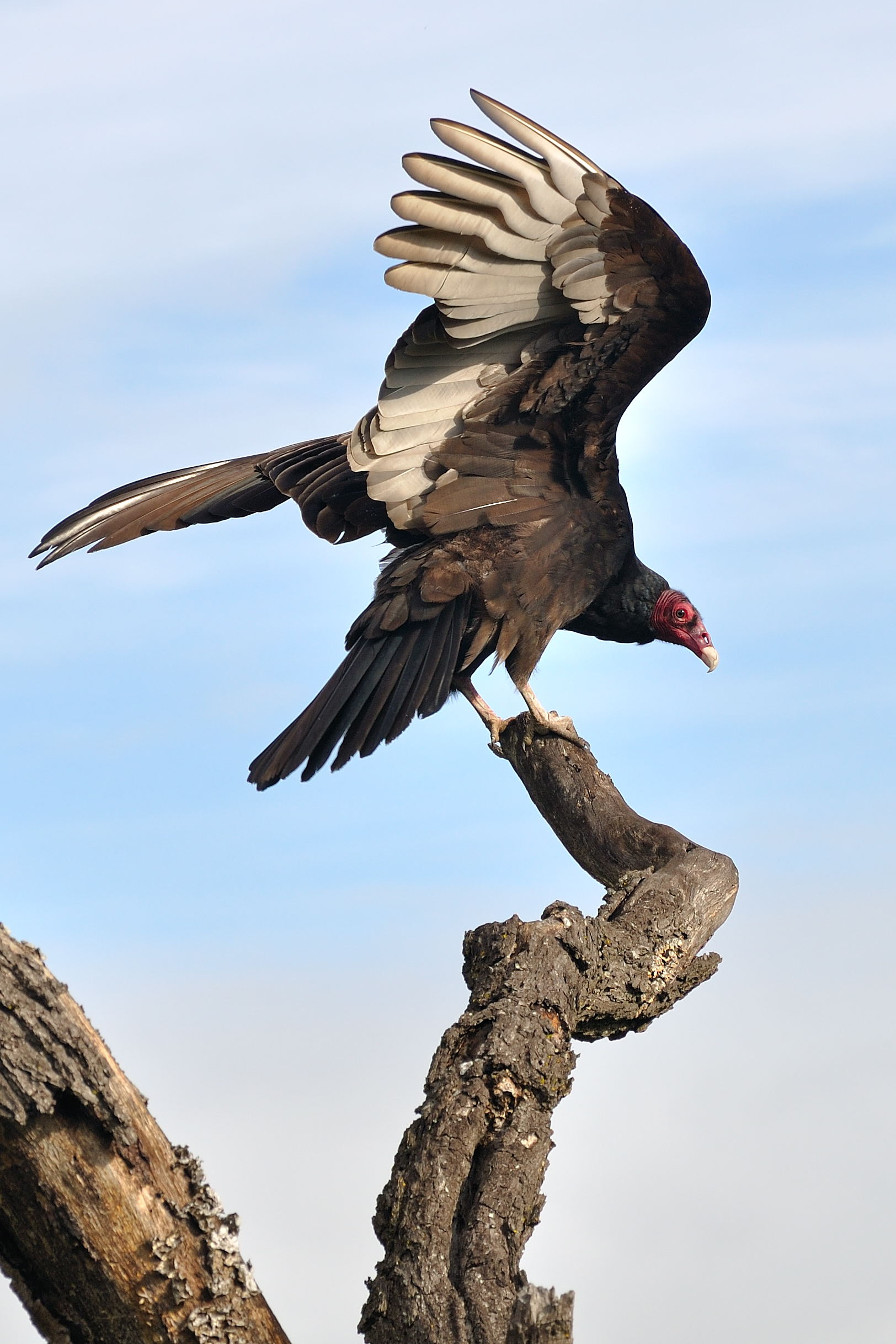Post by dinosauria101 on Oct 30, 2019 17:28:20 GMT 5
Giant Canada Goose - Branta canadensis maxima
The Canada goose (Branta canadensis) is a large wild goose species with a black head and neck, white cheeks, white under its chin, and a brown body. Native to arctic and temperate regions of North America, its migration occasionally reaches northern Europe. It has been introduced to the United Kingdom, Ireland, New Zealand, Argentina, Chile, and the Falkland Islands.[2] Like most geese, the Canada goose is primarily herbivorous and normally migratory; it tends to be found on or close to fresh water. The giant Canada goose (Branta canadensis maxima) is the largest subspecies of Canada goose, weighing in at 5 kg (11 pounds). It is found in central North America. These geese were at one point considered extinct, but were later rediscovered.

www.azfo.org/gallery/challenges/GiantCanadaGoose/images/GiantCanadaGooseAZFO_img_1.jpg
Turkey Vulture - Cathartes aura
The turkey vulture (Cathartes aura), also known in some North American regions as the turkey buzzard (or just buzzard), and in some areas of the Caribbean as the John crow or carrion crow,[2] is the most widespread of the New World vultures.[3] One of three species in the genus Cathartes of the family Cathartidae, the turkey vulture ranges from southern Canada to the southernmost tip of South America. It inhabits a variety of open and semi-open areas, including subtropical forests, shrublands, pastures, and deserts.[1] A large bird, it has a wingspan of 160–183 cm (63–72 in), a length of 62–81 cm (24–32 in), and weight of 0.8 to 2.41 kg (1.8 to 5.3 lb).[26][27][28][29] Birds in the northern limit of the species' range average larger in size than the vulture from the neotropics. 124 birds from Florida averaged 2 kg (4.4 lb) while 65 and 130 birds from Venezuela were found to average 1.22 and 1.45 kg (2.7 and 3.2 lb), respectively.[30][31][32] It displays minimal sexual dimorphism; sexes are identical in plumage and in coloration, and are similar in size.[33] The body feathers are mostly brownish-black, but the flight feathers on the wings appear to be silvery-gray beneath, contrasting with the darker wing linings.[26] The adult's head is small in proportion to its body and is red in color with few to no feathers. It also has a relatively short, hooked, ivory-colored beak.[34] The irises of the eyes are gray-brown; legs and feet are pink-skinned, although typically stained white. The eye has a single incomplete row of eyelashes on the upper lid and two rows on the lower lid.[35]

Credit to Wikipedia
NOTE: I know the goose is a lot bigger than the vulture, but it probably needs size advantage due to the vulture's superior weapons
The Canada goose (Branta canadensis) is a large wild goose species with a black head and neck, white cheeks, white under its chin, and a brown body. Native to arctic and temperate regions of North America, its migration occasionally reaches northern Europe. It has been introduced to the United Kingdom, Ireland, New Zealand, Argentina, Chile, and the Falkland Islands.[2] Like most geese, the Canada goose is primarily herbivorous and normally migratory; it tends to be found on or close to fresh water. The giant Canada goose (Branta canadensis maxima) is the largest subspecies of Canada goose, weighing in at 5 kg (11 pounds). It is found in central North America. These geese were at one point considered extinct, but were later rediscovered.

www.azfo.org/gallery/challenges/GiantCanadaGoose/images/GiantCanadaGooseAZFO_img_1.jpg
Turkey Vulture - Cathartes aura
The turkey vulture (Cathartes aura), also known in some North American regions as the turkey buzzard (or just buzzard), and in some areas of the Caribbean as the John crow or carrion crow,[2] is the most widespread of the New World vultures.[3] One of three species in the genus Cathartes of the family Cathartidae, the turkey vulture ranges from southern Canada to the southernmost tip of South America. It inhabits a variety of open and semi-open areas, including subtropical forests, shrublands, pastures, and deserts.[1] A large bird, it has a wingspan of 160–183 cm (63–72 in), a length of 62–81 cm (24–32 in), and weight of 0.8 to 2.41 kg (1.8 to 5.3 lb).[26][27][28][29] Birds in the northern limit of the species' range average larger in size than the vulture from the neotropics. 124 birds from Florida averaged 2 kg (4.4 lb) while 65 and 130 birds from Venezuela were found to average 1.22 and 1.45 kg (2.7 and 3.2 lb), respectively.[30][31][32] It displays minimal sexual dimorphism; sexes are identical in plumage and in coloration, and are similar in size.[33] The body feathers are mostly brownish-black, but the flight feathers on the wings appear to be silvery-gray beneath, contrasting with the darker wing linings.[26] The adult's head is small in proportion to its body and is red in color with few to no feathers. It also has a relatively short, hooked, ivory-colored beak.[34] The irises of the eyes are gray-brown; legs and feet are pink-skinned, although typically stained white. The eye has a single incomplete row of eyelashes on the upper lid and two rows on the lower lid.[35]

Credit to Wikipedia
NOTE: I know the goose is a lot bigger than the vulture, but it probably needs size advantage due to the vulture's superior weapons



